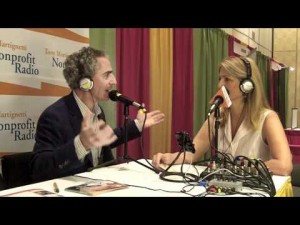
Here’s the executive summary:
1. You don’t have to be big to do Planned Giving. Dismiss the idea that only big charities with lots of expertise can have a Planned Giving program. It’s not true.
If you’ve been around for at least 5 years and have individual donors over age 60, you’re ready.
2. Make your message about the donor. Keep your copy free of fundraiser jargon. Here’s your test: would your dad and grandmother get it?
3. Start simple. Bequests in a will and naming your charity as a beneficiary on life insurance, IRAs and pension plans are easy to promote and easy for your donors to execute. No expertise required.
4. Say “Thank you.” When you learn of a gift, don’t let your first thank you be the last. A small recognition society is an ideal way to keep donors engaged and regularly express gratitude. You do this for donors who make outright gifts. Your deferred gift donors deserve the same.
Give your society a name that’s unique to your organization. Avoid “legacy circle” and “heritage society.” They’re ubiquitous.
5. Talk about something new. Inaugurating your Planned Giving program is newsworthy. Creating your recognition society is newsworthy. The mere fact of your existence and hard work isn’t enough to get attention. What’s new?!
6. Ask. If you’re not asking for gifts, you’re leaving money on the table. If planned gifts come in without asking, you’ll get even more when you start asking.
7. Talk about the impact. Tell us what a bequest will do for your charity. Provide food or clean water? Rescue a cat? Save lives by investigating human rights abuses?
There’s a lot more on this subject in my series for GuideStar, “Make 2010 The Year YOU Start Planned Giving.” It remains timely in 2012.
Here’s the video of my interview with Claire.
I never recommend a robust website for a small charity, start-up Planned Giving program. They’ll have to spend money driving people to the fancy, unnecessary site. That’s not where prospects will emerge. They’ll come from face-to-face meetings and targeted direct mail.
Simple, sensible advice that should provide small NPOs with reassurance that even they can seek and attract planned gifts. One question, do you know what overall usage and ROI is for on-line planned giving sites such as those offered to organizations by Stelter and Crescendo? One wonders whether the expense is worthwhile or whether a simple, but clear Web page, a few print pieces (for those who still prefer the feel of paper in their hands when reading), and face-to-face contacts result in the greatest success.